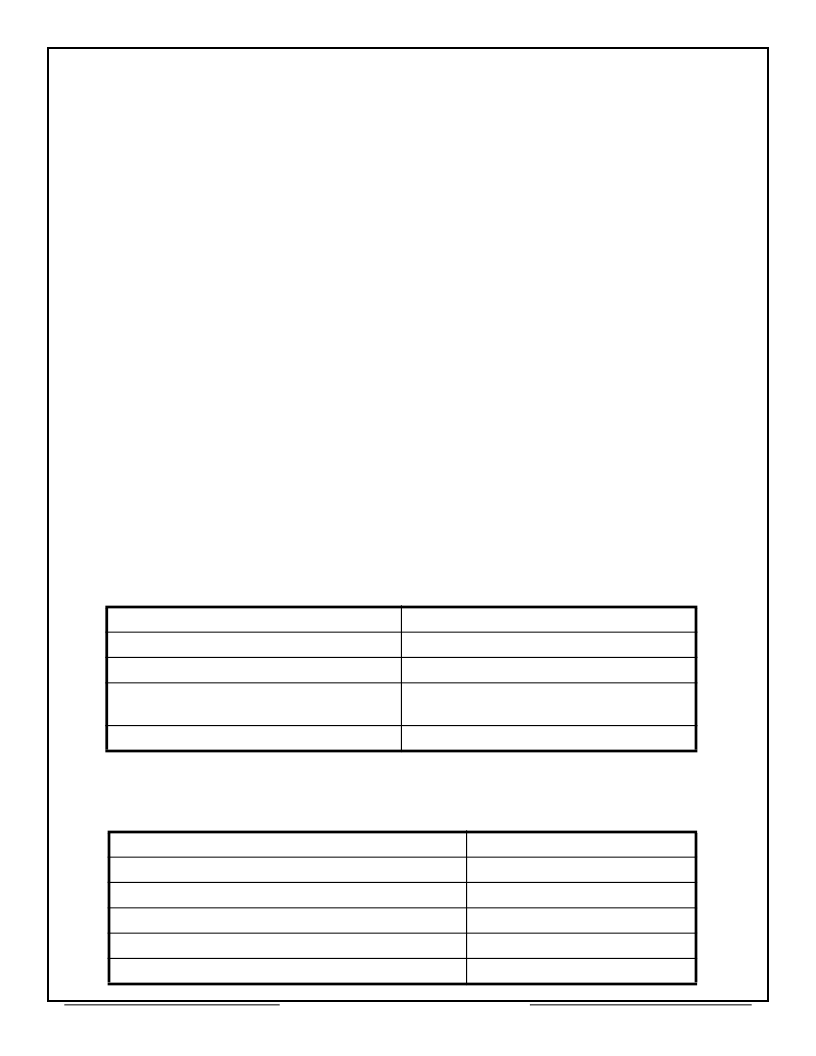- 您現(xiàn)在的位置:買賣IC網(wǎng) > PDF目錄369674 > CT2100-400 (Aeroflex Inc.) CT2100-400 MICROPROCESSOR CONTROLLED QUAD SOLID STATE RELAY PDF資料下載
參數(shù)資料
| 型號: | CT2100-400 |
| 廠商: | Aeroflex Inc. |
| 英文描述: | CT2100-400 MICROPROCESSOR CONTROLLED QUAD SOLID STATE RELAY |
| 中文描述: | CT2100 - 400單片機控制的四固態(tài)繼電器 |
| 文件頁數(shù): | 2/6頁 |
| 文件大小: | 191K |
| 代理商: | CT2100-400 |

2
Aeroflex Circuit Technology
SCDCT2100 REV B 10/1/98 Plainview NY (516) 694-6700
DESCRIPTION
The CT2100-400 is a quad solid
state relay. The device has been
designed to provide an interface
which operates as a simple
computer I/O port. The switches
are controlled by a single data
word which the processor writes to
an internal control latch. In
addition to the basic switch
function ON/OFF and Trip flags
provide the operational status of
each of the four switches. These
signals are internally contained in
an 8 bit status register which is
accessible
by
command. The switches may also
be
controlled
(without write strobes) by use of
separate initialization pins. These
may also be used for Power-Up
control in a microprocessor based
system.
SWITCH CONTROL
an
I/O
read
asynchronously
The
independent
switches which may be used as
high side or low side drivers. The
isolated design allows the user
to parallel devices or place them
in series as required for the
specific application. Control of
the switch is via I/O write
(Address 0) or asynchronous
control lines. The CT2100-400
has an internal switch control
latch which is updated via
subsystem
I/O
illustrated in Figure 2. Once the
I/O write is completed the switch
is latched into the OFF or ON
state. The switch may also be
controlled
via
PRESET and CLEAR lines.
These
lines
drive the switch control latch
without the need for a write
CT2100-400
has
four
fully
isolated
write
as
individual
asynchronously
strobe. The PRESET/CLEAR
inputs are enabled by the
initialize pin.
SWITCH STATUS
Each switch in the CT2100-400
is monitored for circuit Trip and
ON/OFF. This data is contained
in a 8 bit status register which is
accessible via an I/O read
(Address 0)
command.
timing for the I/O read is shown
in Figure 1. The Trip and
ON/OFF flags are provided to
the system to assess the
operational capability of the
switch versus the status of the
controlled load. The Trip bit is
set high when the switch has
conducted between 1.1 to 3
amps of current based on the
time to trip curve in Figure 3.
The over current DC trip point is
typically 1.3 amps.
The
Table 1 — Absolute Maximum Ratings
Supply Voltage (V
CC
) — Pin 20
-0.5 to +7.0 Volts DC
Supply Voltage (V
EE
) — Pin 1
-.5 to +18 Volts DC
Logic Input Voltage — Pins 2-9, 12-19
-0.5 to V
CC
+.5 Volts DC
Switch Point Voltage — Pins 39-40, 29-32, 21-22
-600 to +600 Volts (200 ns)
80 Volts DC
Storage Temperature Range
-65°C to +150 °C
Table 2 — Recommended Operating Conditions
Supply Voltage (V
CC
) — Pin 20
+5.0 VDC ±10%
Supply Voltage (V
EE
) — Pin 1
+14.25 to +15.75 VDC
Logic Input Maximum Voltage (High) — Pins 2-9, 12-19
+3.3 V
Logic Input Minimum Voltage (Low) — Pins 2-9, 12-19
+0.8 V
Switch Point Voltage — Pins 39-40, 29-32, 21-22
60 VDC
Operating Temperature Range
-55°C to +125 °C
相關PDF資料 |
PDF描述 |
|---|---|
| CT2500 | CT2500 MIL-STD-1397 Type D & E Low Level Serial Interface Protocol Chip |
| CT2510 | CT2512 / CT2513 / CT2510 / CT2511 Dual Redundant Remote Terminal FOR MIL-STD-1553B |
| CT2510-FP | CT2512 / CT2513 / CT2510 / CT2511 Dual Redundant Remote Terminal FOR MIL-STD-1553B |
| CT2511 | CT2512 / CT2513 / CT2510 / CT2511 Dual Redundant Remote Terminal FOR MIL-STD-1553B |
| CT2511-FP | CT2512 / CT2513 / CT2510 / CT2511 Dual Redundant Remote Terminal FOR MIL-STD-1553B |
相關代理商/技術(shù)參數(shù) |
參數(shù)描述 |
|---|---|
| CT-2101 | 制造商:Methode Electronics Inc 功能描述: |
| CT-2102 | 制造商:Methode Electronics Inc 功能描述: |
| CT21042 | 制造商:KATO/COILTHREAD 功能描述: |
| CT210A-S | 功能描述:USB DATA STREAMING AND PROGRAMMI 制造商:azoteq (pty) ltd 系列:* 零件狀態(tài):在售 標準包裝:1 |
| CT210S | 功能描述:觸摸傳感器開發(fā)工具 Configuration Tool, Replaces CT200. RoHS:否 制造商:Cypress Semiconductor 工具用于評估: 接口類型: 工作電壓: 最大工作溫度: |
發(fā)布緊急采購,3分鐘左右您將得到回復。